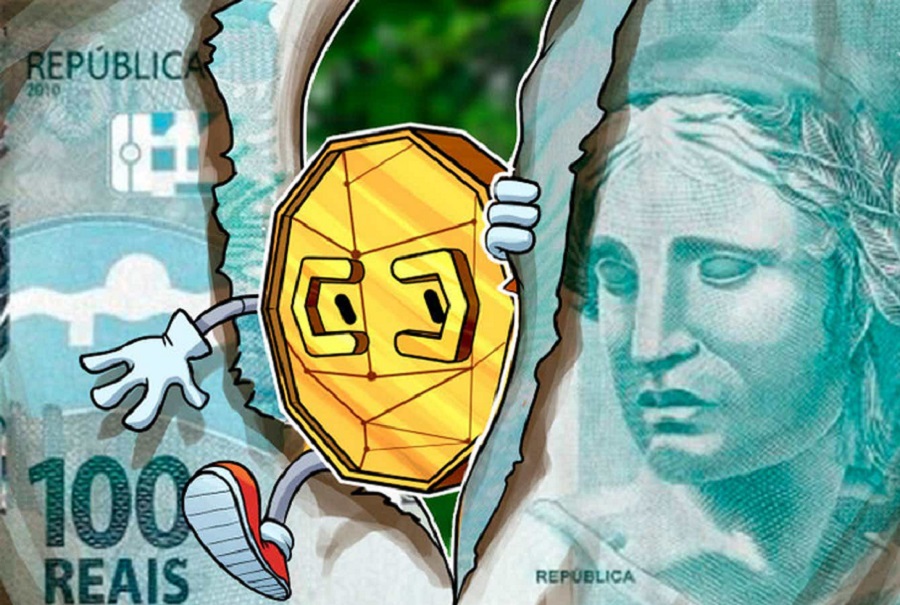RIO DE JANEIRO, BRAZIL – Central banks worldwide are discussing the creation of digital currencies and this includes the Central Bank of Brazil, which is working for the Brazilian currency to gain a digital option soon.
This is a CBDC (Central Bank Digital Currency), an alternative currency, but with the same value as traditional physical money.

“The digital Brazilian real is a form of sovereign Brazilian currency, being developed to support a safe environment where entrepreneurs may innovate and where consumers may have access to the technological advantages offered by these new tools, without having to expose themselves to an unregulated financial environment,” the Central Bank said.
On November 30, the Central Bank announced the creation of LIFT (Financial and Technological Innovations Laboratory), so that banks, cooperatives and financial institutions may contribute to the development of the project, offering solutions to enable the digital Brazilian real.
The Laboratory will be conducted by FENASBAC (National Federation of Associations of Central Bank Servers), in partnership with the Central Bank of Brazil. The plan is to unite market players interested in developing a “minimally viable” product with the features the Central Bank is seeking for the technology, the financial institution states.
Registration for project proposals begins January 10, 2022, and ends February 11. Shortly after applications close, the best rated projects will be selected. The finalists are expected to be announced on March 4.
Thereafter, the Central Bank will begin planning the selected proposals on March 28, and is expected to complete it by July 29.
After this time, a schedule of pilot tests will be prepared for the population. The results of the pilot stage will help define the deadlines for the launch of the digital Brazilian real.
CATEGORIES
With the implementation of the digital real, Brazilians will have a virtual wallet in the custody of an agent authorized by the Central Bank – such as a bank or a payment institution.
The digital real can be converted into any other form of payment currently available – such as a conventional bank deposit or the physical real.
Through the virtual wallet, users will be able to conduct transactions in digital “smart contracts.” In practice, this means that an individual interested in buying a car from a third party will be able to draft a digital contract and allocate the amounts in the digital real.
However, the money remains frozen, and the transfer will only be completed once the vehicle’s documents are in the possession of its new owner and the situation has been regularized by DETRAN (Brazilian State Traffic Department).
This is the first requirement that the Central Bank has set for participating institutions regarding the categories of the currency’s use cases.
“For this to occur, users must have the car token. Society will mobilize towards tokenization, which is a registration of ownership, but digital,” explained FENASBAC chief financial innovations officer Rodrigo Henriques.
In addition to this category, which the Central Bank calls “delivery against payment,” the monetary authority hopes to offer the population the “payment against payment” option.
In practice, this was the name used for exchange transactions. Through the digital real, users will be able to pay and collect in other currencies and convert them.
The Central Bank also establishes that the virtual currency must include features of the Internet of Things, or IoT. As a result, users will no longer need to worry about paying some basic bills or making purchases, because their smart machines will do it for them, using the digital Brazilian real.
“A fridge will be able to automatically make grocery purchases based on what’s in it. If it realizes that there is no more milk, it can purchase it for the user if programmed to do so,” Rodrigo said.
“Another example is a smart car that can pay tolls or parking without the driver having to worry about these issues,” he added.
The economist explained that these smart machines should have their own virtual wallet to make purchases and transfers. The user deposits digital Brazilian real amounts in this wallet in order for the registered machine to be able to make payments.
Finally, the Central Bank determines the validation of decentralized finance. According to Rodrigo, this category will allow transactions to take place only in the digital world, through virtual companies, without these transactions going through traditional banks. “It only works if the currency is digital and the process is very fast,” he added.
The Central Bank said that virtual currency focuses on online payments, including day-to-day ones, and therefore its impact on the demand for paper money should not be relevant.
One of the options that is still under consideration is the offline transfer of the digital real, i.e., when one of the users is not connected to the Internet. This category is not a Central Bank requirement in the Lift Challenge, but the institution has said that it will favor institutions that offer this feature.
Regarding security, the Central Bank stated that “a guideline established for the digital Brazilian real is that it should maintain the same high levels of security and privacy currently available in operations performed in the banking and payment system.”

